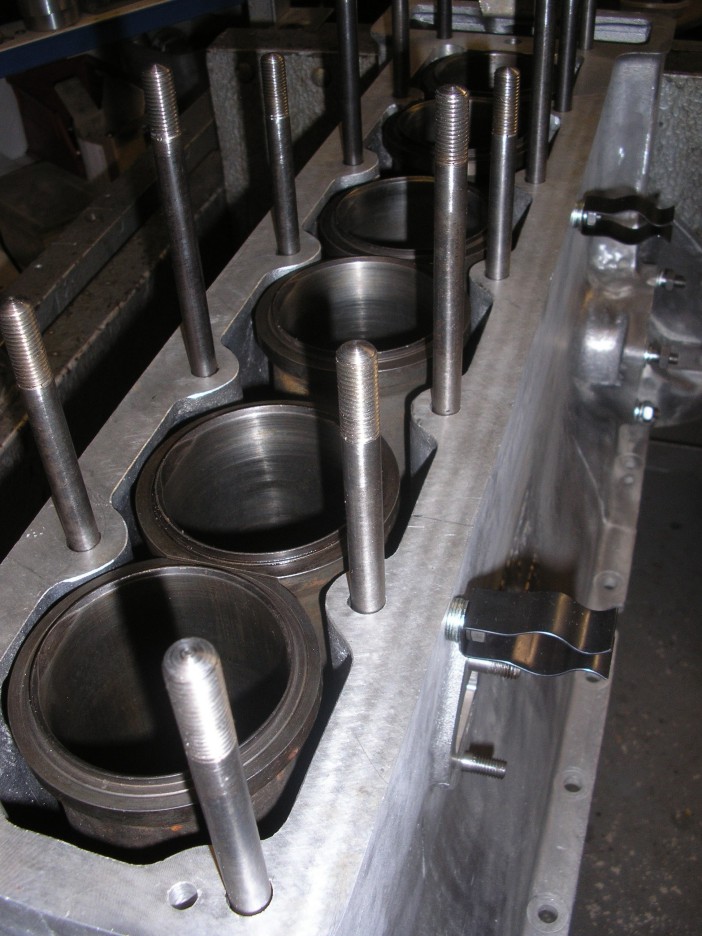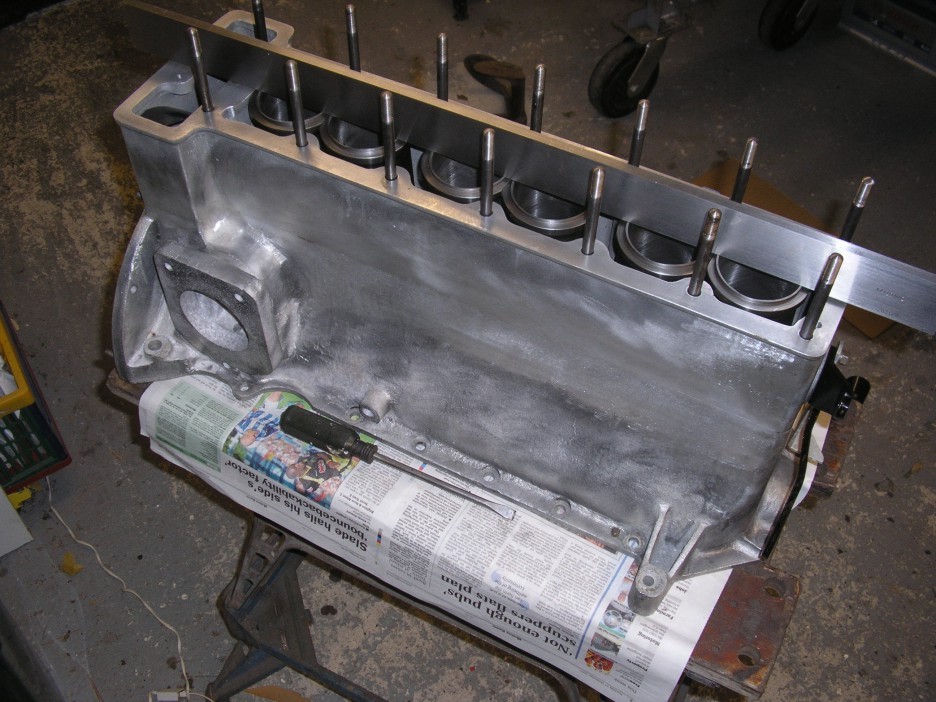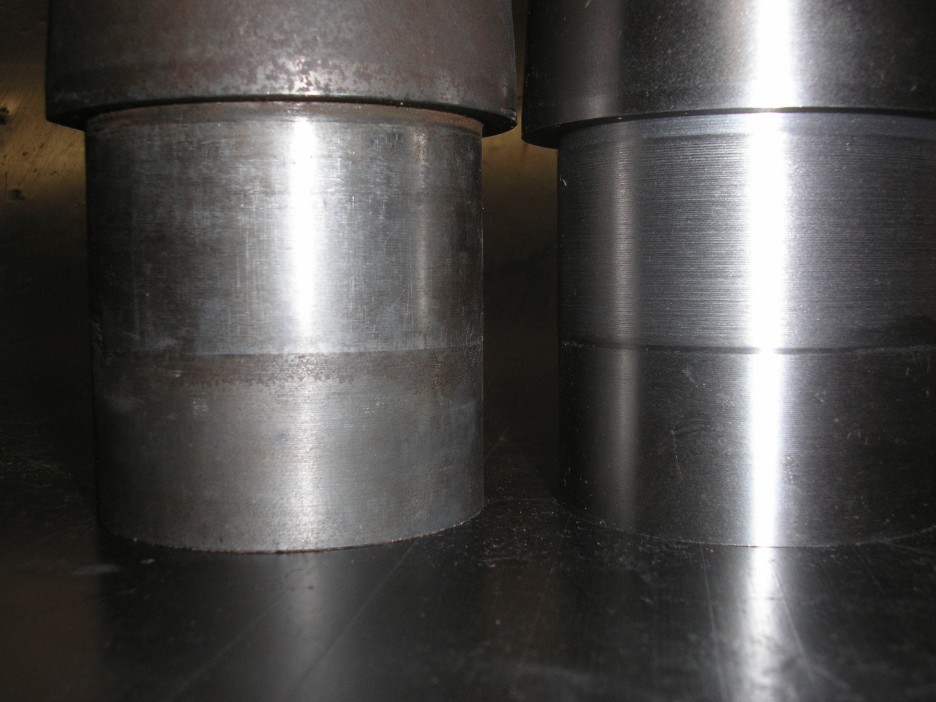Pistons and Liners
Cylinder Liners
A non-traditional approach
A particular aspect of the original liner design that can lead to trouble is that a thick figure-of-eight gasket is needed beneath the liner in order to set the required protrusion of the liner above the block in order to ensure that the head gasket will seal properly. The gaskets were either thick and squashy copper and asbestos or aluminium sandwiched in paper (or Hallite). The former had the advantage of being easy to fit and with a more or less guaranteed seal-by-compression but the disadvantage that over time the gasket would lose its compliance and the liner would sink, thus breaking the seal of the head gasket, the latter often being blamed for failures arising, such as water in the oil.
The advantage of the ali and paper sandwich gasket is that the liner height can be set more accurately but the disadvantage of being very time-consuming and fiddly to fit, a further drawback being that sealant is required between each mating face and sealant has thickness that changes when the head is tightened down. Both types of gasket require renewal virtually whenever the head is removed in order to regain the correct liner protrusion and this would mean stripping the engine, even if the cause were only a blown head gasket! Very often this was/is not done, a new head head gasket installed which would almost certainly fail fairly quickly..
We have designed our cylinder liners to overcome this weakness as they are longer in the body than the original liners and require only a thin gasket and minimal sealant between the liner and the liner bed in the block and once installed, the protrusion is automatically set (assuming that the block still conforms to its design dimensions and that its mating surfaces have not been skimmed).
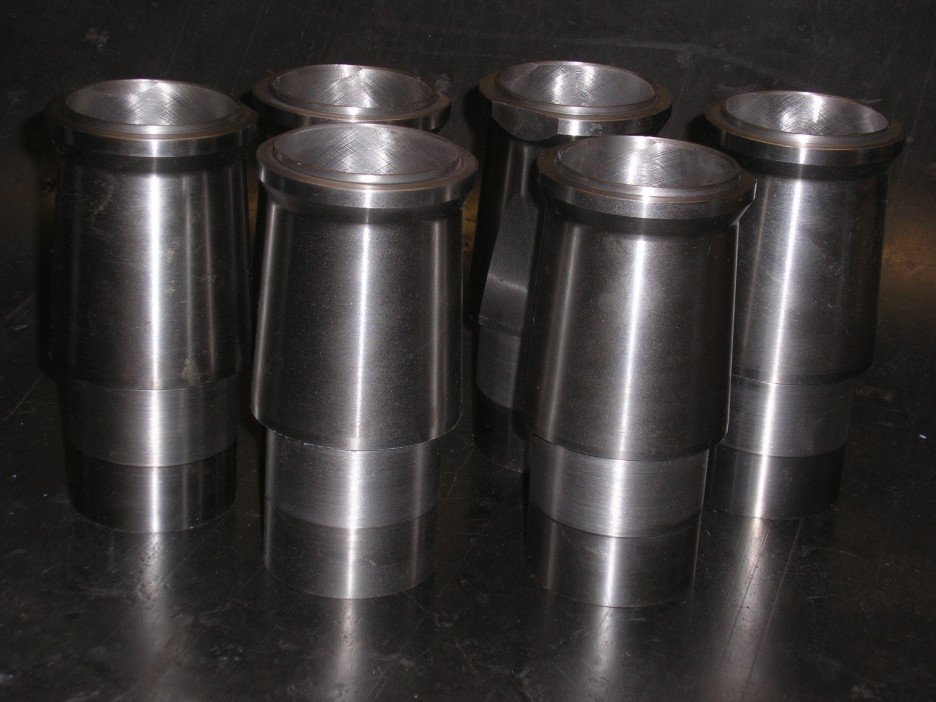
Pistons
Traditional pistons
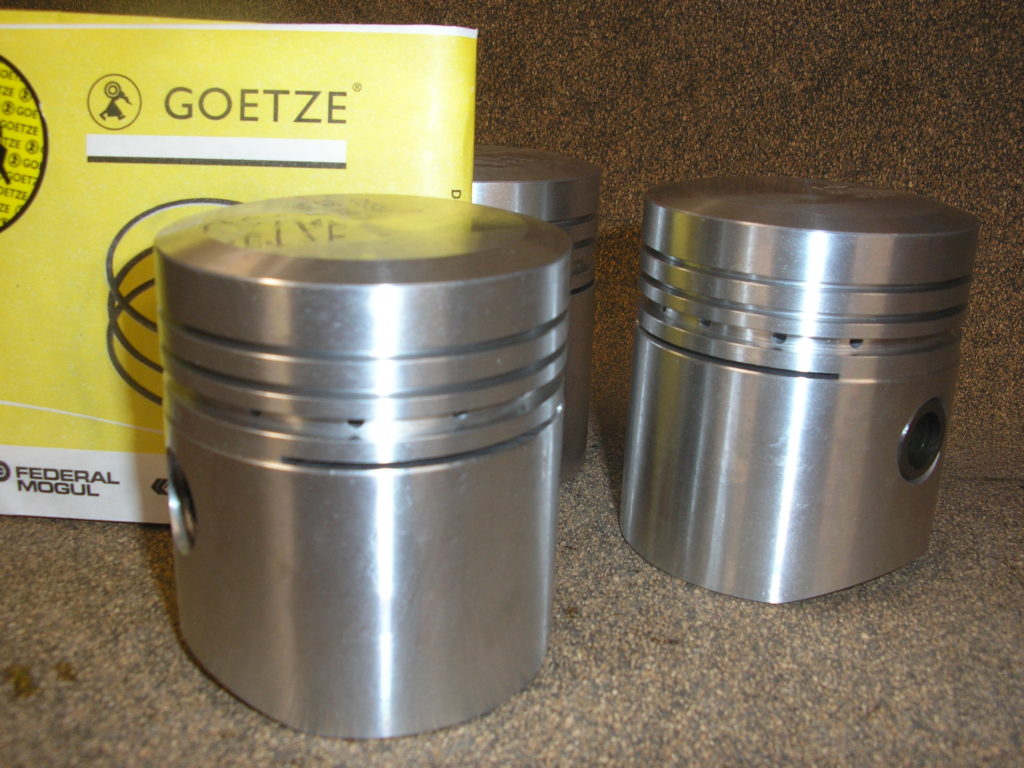
Our traditional pistons closely resemble the flat-domed type originally supplied in AC engines but with the exception that they are designed with narrower ring grooves to accept more easily available modern rings made in Germany by Goetze. The gudgeon pins are made in the West Country by a highly reputed supplier of precision made components. The pistons are only available in standard bore size (65mm) and are usually supplied with our new liners.
The pistons have been used successfully in the Mille Miglia on at least three occasions. We have also sold many sets to customers for less frenetic usage!
Note: The claimed compression ratio (CR) for the domed pistons has always been 9.0:1 and they are commonly referred to as such. In fact, the CR was actually around 7.5:1, which provides perfectly acceptable power output for most uses.
Bespoke pistons
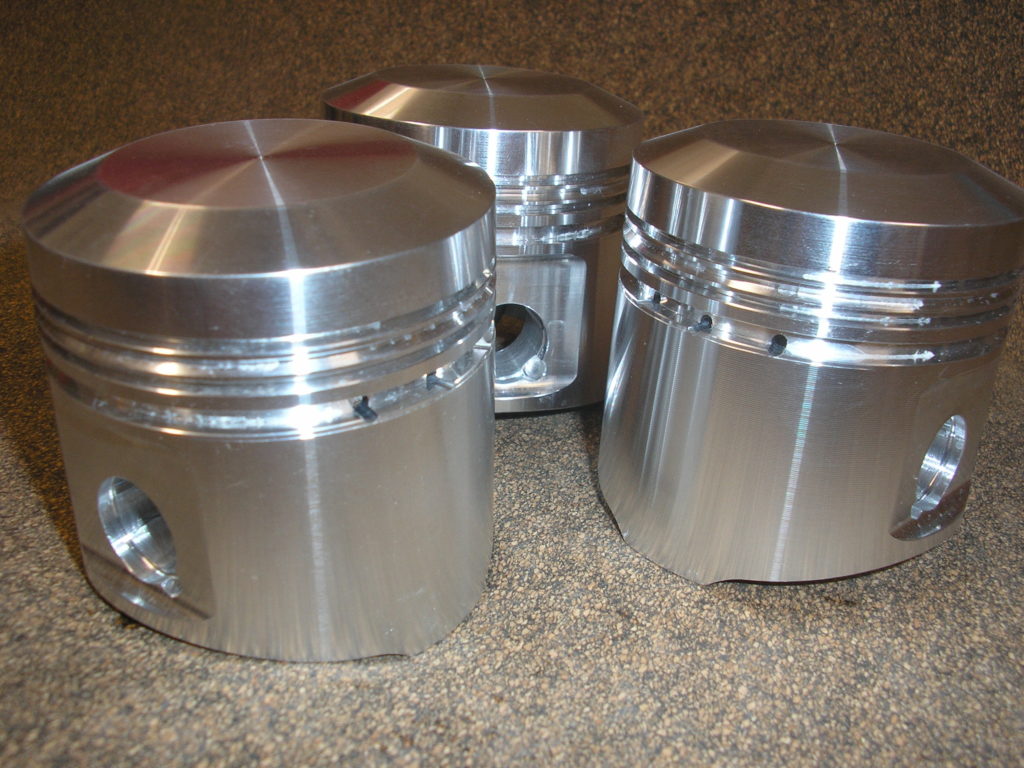
In addition to our traditional pistons, we can supply bespoke forged pistons made in the USA to special order, with CR and bore size to suit. These can be made to suit a a wide range of preferences e.g. shape of dome, with valve recesses, normal or slipper shape for lightness, various ring groove dimensions.
As these pistons are made to our requirements they come with the same, easily obtainable rings as the traditional pistons.
Delivery times vary but a few weeks should be allowed when ordering. We sometimes have a few sets on the shelf so it is always worth enquiring just in case we have the ones that you need in stock already.
